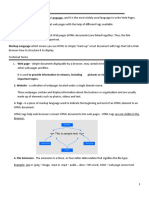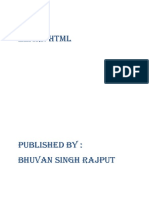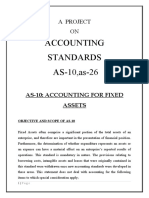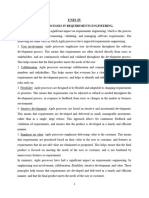0% found this document useful (0 votes)
17 views25 pagesHTML
The document provides a comprehensive overview of HTML, detailing its basic structure, elements, and common tags used for web development. It explains the purpose of various components like <head>, <body>, and <meta> tags, as well as how to create lists, tables, forms, and links. Additionally, it covers advanced topics such as iframes, file paths, and favicons, making it a useful resource for beginners learning HTML.
Uploaded by
shaik.asiya1712Copyright
© © All Rights Reserved
We take content rights seriously. If you suspect this is your content, claim it here.
Available Formats
Download as DOCX, PDF, TXT or read online on Scribd
0% found this document useful (0 votes)
17 views25 pagesHTML
The document provides a comprehensive overview of HTML, detailing its basic structure, elements, and common tags used for web development. It explains the purpose of various components like <head>, <body>, and <meta> tags, as well as how to create lists, tables, forms, and links. Additionally, it covers advanced topics such as iframes, file paths, and favicons, making it a useful resource for beginners learning HTML.
Uploaded by
shaik.asiya1712Copyright
© © All Rights Reserved
We take content rights seriously. If you suspect this is your content, claim it here.
Available Formats
Download as DOCX, PDF, TXT or read online on Scribd
/ 25























































































